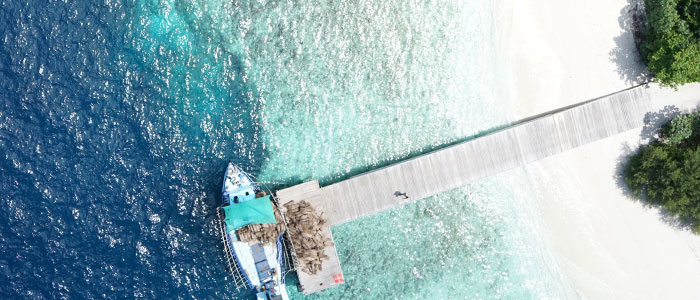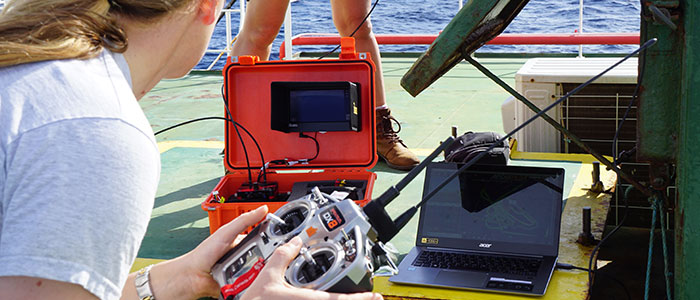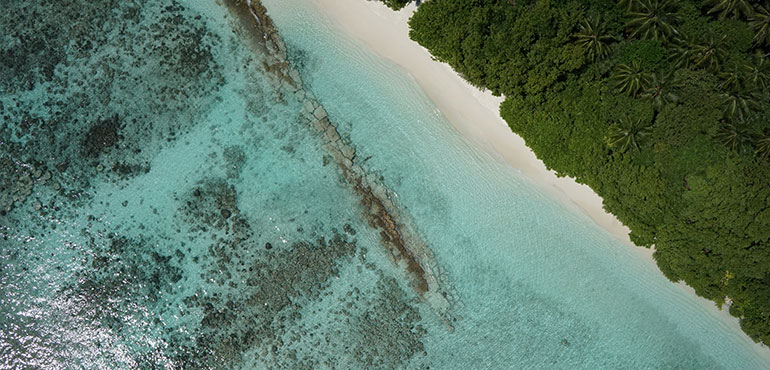Project Drone – pioneering steps into water landing drones in marine ecology
Melissa Schiele, MSc student from Imperial College London, joined the 2018 May expedition to the British Indian Ocean Territory to use drones to look at megafauna distribution across the Chagos Archipelago. @explorer_mel
I was thrilled when Dr Tom Letessier from ZSL chose me to help with his drone research as part of the Bertarelli Programme in Marine Science. To our knowledge, no one had a fixed-wing water landing drone. Our plan was to survey some of the islands of the Chagos Archipelago to compare distributions of megafauna around islands with birds nesting on them to islands with invasive rats on them.

The use of UAVs (Unmanned aerial vehicles), or drones, is gaining traction in the world of ecology and conservation. In marine environments, drones are being tested for their ability to locate megafauna and map areas. Initial results have been promising across the board and many are looking to drones (of all types) to bridge the gap between ground truthing surveys (diving transects etc) and large-scale plane based surveys, which cover thousands of kilometers.
At the end of April, I flew out to Canada to learn how to fly our new drones with Aeromao, the company that created our waterproofed drone capable of flying huge distances with the strength, stability and mechanisms of a small plane. With a two-meter wingspan, the units look impressive. After a week of training and our first successful water landing on Lake Eerie, I packed up the two drones and flew from Toronto to the Maldives.

After a tense few days waiting for customs to release our drones, one hour before departure, they arrived on board our research vessel and we steamed to the Chagos Archipelago. Our first deployment and retrieval was a success and we captured our first aerial footage. Our drones have two cameras on board; one on the belly of the fuselage takes snaps every second and one in the clear nose cone that allows for live streaming of the drone flight to a screen used by the drone pilot. The images that we took have proved our original concept worked and we were able to pin point sharks, birds and large fishes.
It is however important to highlight some of the difficulties that we faced, both technical and weather wise. The units are essentially prototypes, and although overall the drone did well, we found some small entry points allowing water to get in which we are working on fixing. We also lost a few days to poor weather. For safety reasons, we cannot fly in strong winds and there is little sense flying in rain. However, by the end of the three-week expedition, we had a suite of images and two drones needing a bit of TLC.

These are just the beginnings of a very exciting, international effort into water landing drones for use in marine ecology. We are learning from any mistakes we make and becoming deft at drone mechanics too.
To read the full article: https://www.zsl.org/blogs/chagos-expedition/project-drone-pioneering-steps-into-water-landing-drones-in-marine-ecology
